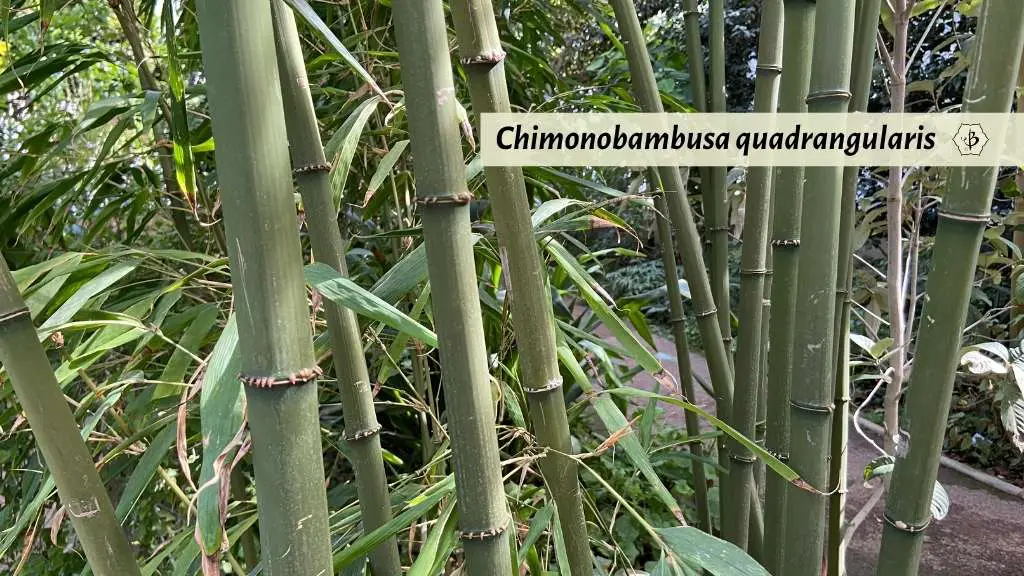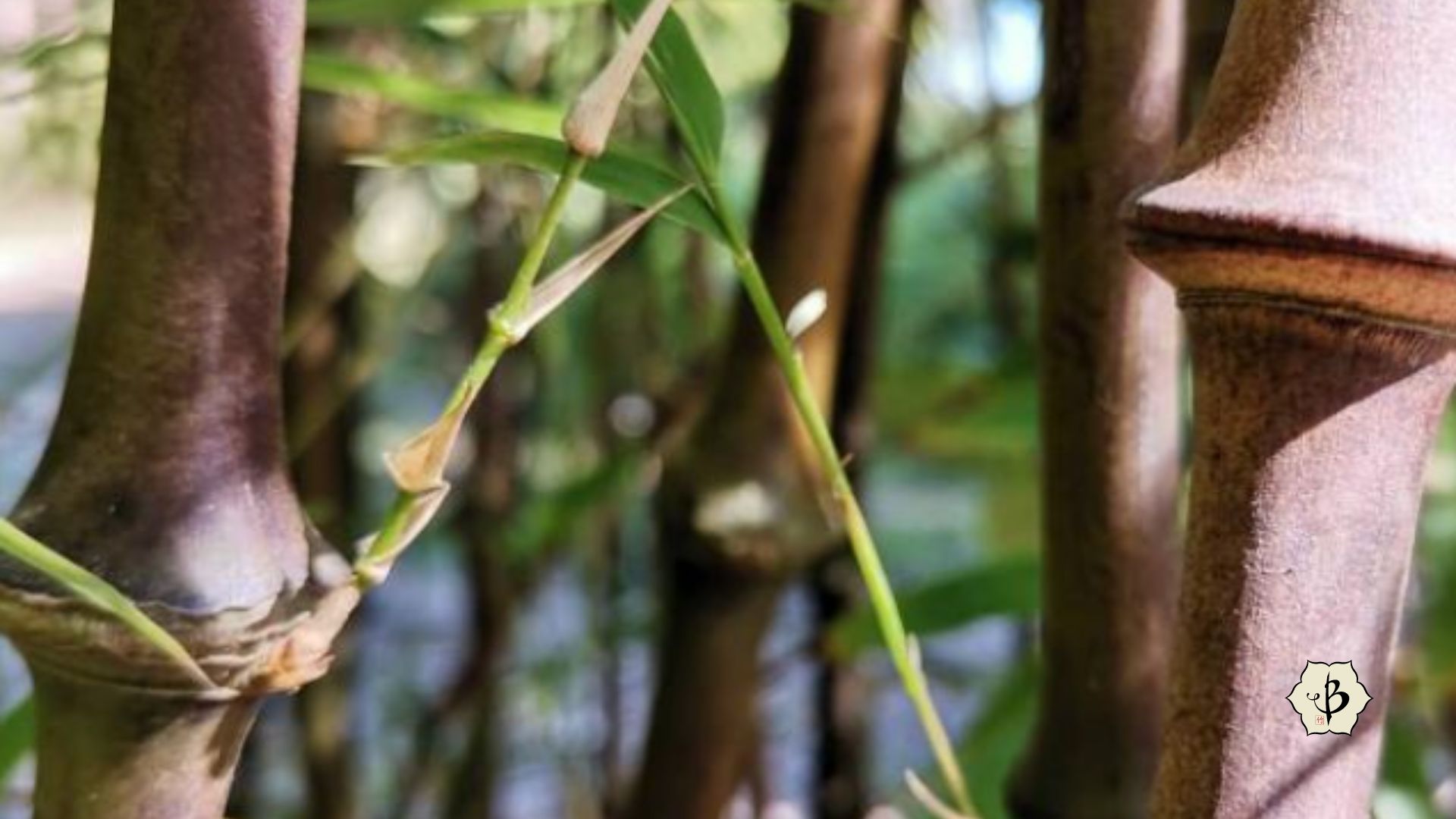If you asked your average Sam on the street to describe a bamboo plant, they could probably tell you it’s made up of long, tall stems that resemble straight, hollow tubes, typically yellow in color with a canopy of narrow leaves. For the most part, this would be a pretty accurate description. But of the nearly 2,000 species and cultivars of bamboo, there’s more than a handful of varieties that stand out with unusual traits and characteristics.
Some of the most interesting specimens are the bamboo with zigzags. Among the columns of upright culms, these unusual bamboo plants will stand out and add an extra dimension of visual interest to an already attractive grove. Phyllostachys aureosulcata ‘Spectabilis’ and Phyllostachys flexuosa are among the two most common varieties of bamboo with zigzags. Shibataea kumasasa, a smaller and more exotic species, also goes by the name zigzag bamboo because of its unusual configuration of leaves.
For real collectors and bamboo aficionados, these distinctively shaped bamboos can make for real prized specimens. In the following article we’ll help you identify the different species of zigzag bamboo. And by knowing more about them, you can decide which variety, if any, would make the most sense in your garden and your climate zone.
NOTE: This article first appeared in November 2020, most recently updated in April 2024.

Identifying bamboo
Bamboo can be one of the hardest plants to identify with precision. That is, you can almost always recognize a bamboo plant pretty easily, with its long, upright, segmented stalks (culms). But to know what species of bamboo you’re looking at requires a great level of expertise.
It’s not uncommon for someone to see a beautiful specimen of bamboo growing in a park or garden somewhere, and suddenly develop a case of herbal envy. Rushing off to the nearest nursery, they may demand to purchase whatever bamboo is available. But the plant in the nursery doesn’t look quite the same. Maybe if they bring it home and take really good care of it, the bamboo will grow out to be beautiful like the one they saw in the botanical garden? Maybe.
Or maybe it’s a completely different species of bamboo, with differently shaped stems, different-sized leaves, and most importantly, an altogether different growth habit.
Like identifying mushrooms, recognizing bamboo species can be tricky. And a mistake can cause you some great discomfort. No, you won’t end up with a poisonous bamboo, but you can end up with an invasive variety of running bamboo. And when you buy a small, potted bamboo from a nursery, you may have no idea whether it will remain compact and petite or grow up to be a massive timber bamboo.
But once in a while you come across a unique species with some defining characteristic that can’t be missed. But even then, it’s hard for the novice bamboo grower to be 100% sure.

Bamboo species with zigzag culms
It’s pretty uncommon for bamboo to grow with zigzag culms, so when you see this trait, it can really help you narrow down the possibilities. But don’t expect every stalk of the plant to make a zig-zag. Even with bamboos that are known to do this, only about 20 percent of culms (very roughly speaking) exhibit this eye-catching feature.
The most popular bamboos with zigzags both belong to the genus Phyllostachys. And as it happens, Phyllostachys is one of the easier genera to recognize. Look for the sulcus groove, which is the narrow groove or indentation that runs lengthwise up the internode on alternating sides of the culm. The grooves begin just above the nodal joint, at the point where the lateral branches come out. Sometimes the groove is subtle, and sometimes it’s very pronounced. But if you find it, you know you have a Phyllostachys, and that means it’s a running bamboo, potentially very fast spreading, and relatively cold hardy.

Phyllostachys aureosulcata ‘Spectabilis’
You might not find this collector’s species at your local nursery, but it’s one well worth looking for. Not only does it have occasionally zigzagging culms which give the plant a stunning appearance, but the culm also have stripes. While the zigzag only happens here and there, almost every culm with have a green stripe running along the sulcus grooves. Otherwise, the culms usually start out green, and slowly turn to a buttery yellow color.
The main species (Phyllostachys aureosulcata, without the ‘Spectabilis’) is also quite popular and attractive. It goes by the common name Yellow Groove Bamboo, as it has a yellow stripe along the sulcus groove. But this species is not known to zig zag.
Otherwise, the two varieties are fairly similar. The canes can grow about 15-25 tall, with a diameter of 1-1.5 inches. They do have running roots, but not dangerously aggressive. They can also grow in a wide variety of climates, at least zones 6-9, and cold tolerant to about 0º F. Thick foliage makes it a good bamboo for a privacy screen, as well.
It’s a good idea to keep the lower portions of the plant well pruned, up to about 3 or 4 feet. This really allows the bamboo to show off those funky zigzags.

Phyllostachys flexuosa
This species often goes by the name Zigzag Bamboo, but I’ve also seen it listed as Drooping Timber Bamboo. As the species name might tell you, the culms are all pretty flexible. Sometimes this results in zigzagging in the lower culms, as well as a graceful arch at the top of the plant.
P. flexuosa is similar in size to Spectabilis, 15-25 feet tall and about 1.5 inches thick. Like all varieties of Phyllostachys, it is a running bamboo, and it’s also very cold-hardy. There are a couple of subspecies or cultivars, with beautifully variegated leaves, but they may not zigzag as much. Bamboo specialists may offer P. flexuosa ‘Kimmei’ or ‘Spring Beauty’.
Increase the zigzags in your bamboo
To really showcase your zigzag culms, it’s best to prune away all the lower leaves and branches from about 3 or 4 feet down to the ground. But to increase the rate of zigzagging, you can also try topping the culms once a year. Towards the end of the growing season, cut back the tops of your newer canes, somewhere just below their natural height, or lower if you prefer a shorter plant. This seems to have a way of tricking the plants into “thinking” they need to zigzag in order to make more use of their limited vertical space.

Other zigzag bamboos
As is often the case with bamboo, you can find more than one species with the common name “zigzag bamboo”. Golden bamboo, solid bamboo and graceful bamboo, just to name a few, all present a similar challenge to gardeners.
Shibataea kumasasa
This highly unusual species, of Chinese origin, goes by the names Zigzag Bamboo and Ruscus Bamboo. But these common names actually refer to the leaves of this exotic bamboo. The plant actually bears a striking resemblance to Ruscus, or butcher’s broom, chiefly due to the shape and arrangement of the leaves.

If you’re looking for a leggy bamboo with long, elegant culms that zigzag, this is NOT it. But if you want to to mix up your bamboo collection with something like no other, this species is well worth tracking down. Ideal as low hedge or a ground cover, this variety only gets to be about 4 or 5 feet tall. And unlike many dwarf bamboos, namely the genus Pleioblustus, Shibataea is a clumping type.
Dendrocalamus hamiltonii
This is another exotic species of bamboo with occasional zigzags. Dendrocalamus hamiltonii is a tight-clumping tropical species, native to Southern Asia. It favors warmer climates without the risk of frost. Dull green culms can grow 30 to 40 feet tall, and up to 4 or 5 inches thick, with lots of lateral branching. The fresh shoots are supposed to be delicious.
Phyllostachys nidularia
Sometimes called Broom Bamboo, this is a rare and unrated species. Growing 30-35 feet tall with culms up to 1.5-2 inches in diameter, it’s a good choice for tall privacy screens or windbreaks. It’s also more adaptable to wet soil conditions, similar to Phyllostachys atrovaginata and Phyllostachys heteroclada. And like these two species, Ph. nidularia is very cold-hardy, down to about 0º F. Strange culm leaves and crooked poles give this bamboo an unusual appearance.

Other strange and exotic bamboo features
If you’re a fan of bamboo with zigzags, you might also be interested in some of these specialty plants. Also check out our articles on Bamboo with the longest internodes, Bamboo with stripes, and Bamboo bonsai.
Indocalamus tessellatus
Also known as large leaf bamboo, this probably has the largest leaves of any bamboo, up to 2 feet long and 5 or 6 inches wide. The plant itself is fairly compact, like a shrub, growing 6 to 8 feet tall. A good choice for cooler climates.

Chimonobambusa quadrangularis
If it’s irregular culms you want, then “Square Bamboo”, as it’s better known, makes a great addition. It can grow 15-25 feet tall, with remarkable square culms about 1-1.5 inches thick. The plants are cold hardy to about 10º F, and prefer lots of shade, especially if temperatures consistently get into the 80s or hotter.
Serious bamboo connoisseurs can also look for C. quadrangularis ‘Suow’ or “Golden square stem”, a striped cultivar with similar traits but occasional yellow stripes on the otherwise green culms.

Chimonobambusa tumidissinoda
Commonly known as “Walking Stick Bamboo”, this species is famous for its shapely culms. In addition to its distinctively prominent nodes, this running bamboo also has very graceful foliage, arching at the tops with small, delicate leaves. Plants can grow 5-15 feet tall, with nodes about 1 inch thick. It prefers at least some shade, and is cold hardy to about 5º-10º F.
Further reading
If you’d like to learn more about bamboo in all its many shapes and forms, take a look at some of our most popular articles.
- Best bamboo varieties for your garden
- Tortoise Shell Bamboo
- Buddha’s Belly Bamboo
- How to choose the best bamboo
- Directory of bamboo nurseries
- Eating bamboo: 9 tasty species
- Bamboo Q & A: Ask the experts
FEATURE PHOTO: Phyllostachys aureosulcata ‘Spectabilis’ can form crooked culms and irregular nodes. Photo by Fred Hornaday.


























I did enjoy reading about the difference in some of the other bamboo plants